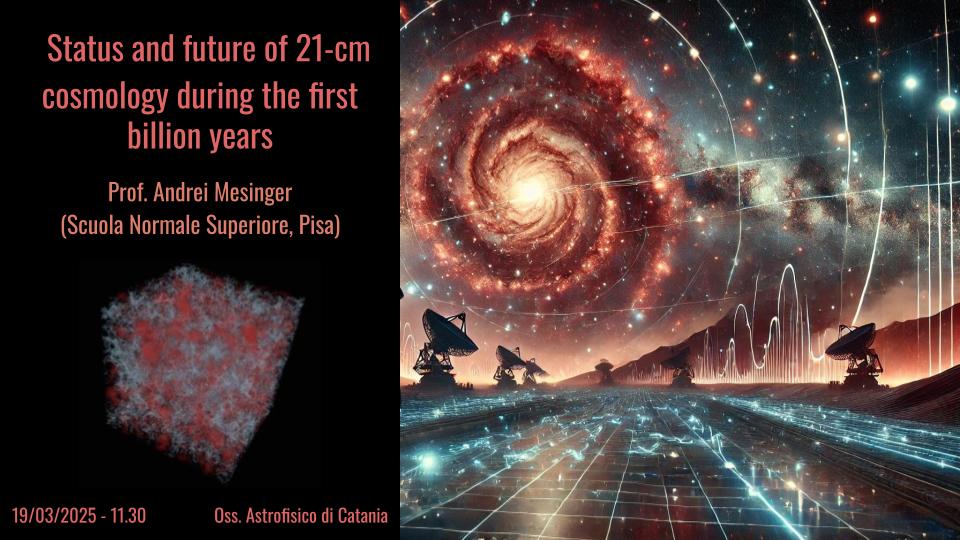Status and future of 21-cm cosmology during the first billion years
Sede A. Riccò Via Santa Sofia 78, CataniaThe 21-cm hyperfine line of neutral hydrogen is set to revolutionize studies of the first billion years, spanning the cosmic dawn of the first stars and eventual reionization of our Universe. I will discuss the potential of this probe in learning about the unknown astrophysics of the first galaxies as well as physical cosmology. Current upper limits on the cosmic 21-cm power spectrum already provide new insights into the heating of the intergalactic medium, and the X-ray sources in the first galaxies. I will discuss the upcoming steps, including the main challenges, that will eventually lead to the Nobel prize-worthy 3D map of half of our observable Universe with the Square Kilometer Array (SKA) telescope.

